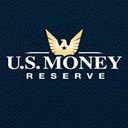Riding a Bubble to the Very Edge of Chaos
By John Rothans, Chief Numismatist @ U.S. Money Reserve
Pity the home buyer in 2018. Not only are mortgage rates climbing but home prices surged again in the first quarter of this year and are now rising at the fastest rate in over a decade. According to Zillow, the average home value in the United States now stands at $215,600 — an increase of 8.7% over the past year.
It’s 2018, and who would have thought that at “Open Houses” across America we’d see the return of multiple offers, bidding wars, and homes selling for “over asking.” With demand outstripping supply, buyers are competing for extremely limited inventory, particularly in the starter-house market where the number of available homes fell more than 15% year-over-year while prices rose over 11%. With U.S. home ownership already at historic lows, first-time home buyers are being pushed out of the market, prompting Redfin CEO Glenn Kelman to assert that we’ve become a “landlord nation” where “one half of Americans are renting out homes to the other half.”
The supply-and-demand imbalance is being blamed on a number of things. The subprime mortgage crisis hit homebuilders particularly hard. When the housing bubble burst a decade ago, countless construction companies closed and top builders saw revenues drop by over 60% between 2007 and 2010. With crash fears still fresh, builders remain hesitant to go “all in” to solve the housing shortage. Add rising construction fees, soaring labor costs, and zoning challenges — and the pace of home building remains historically low as new residential housing is being added at only half the historical rate.
Homeowners are also not selling. According to a recent Bankrate survey, an overwhelming majority of American homeowners, nearly 80%, stated that they have no plans to sell or move anytime soon. Mortgage surveys show that many are locked in historically low interest rates and are simply unwilling or unable to give them up. Homeowners are also being held back by economic uncertainty and the outright fear of becoming a buyer in the current climate where they will face higher prices and limited options.
Not only do we have a limited supply of homes, surging demand, and a sluggish building sector, but those market-disrupting “speculators” are also back. Flipping — which is generally understood as the practice of buying a property low, fixing it up, and selling it for a profit within a year — is at its highest level since 2007. While the housing crisis was generally blamed on borrowers with dicey credit, new research is revealing that it was actually more creditworthy middle-income investors who engaged in flipping and speculation, driving prices unsustainably higher and then defaulting en masse.
So are we in another bubble? Home values have not appreciated this quickly since 2006. Twenty-one of the 35 largest housing markets in the country have now surpassed previous peak prices reached during the housing boom. And roughly two-thirds of all U.S. housing markets are now the highest they have ever been.
But unlike the housing crash of 2008, we have the added challenges of tighter credit and limited inventory, creating an affordability crisis. The only way to buy a house in 2018 is to overpay for it. And if wages drop or the economy wavers, things could go south very quickly just as they did only a decade ago.
2008 was an eventful year. It started with oil surging to $100 a barrel, the Fed cutting its prime rate twice in eight days, the House passing a $146 billion economic stimulus package, and gold reaching a new record high. By late September, the Dow Jones recorded it largest point drop ever. And by late December, the Case-Shiller home price index logged its largest price drop ever.
Old habits die hard and bad ones are particularly tough to kill. Buyers will always overspend. Flippers will always flip. And Americans will always ride a bubble to the very edge of chaos. Mark Vitner, managing director and senior economist for Wells Fargo, perhaps said it best: “I am surprised at how much speculation has returned to an economy that paid such a heavy price for it not long ago.”
